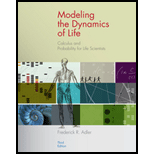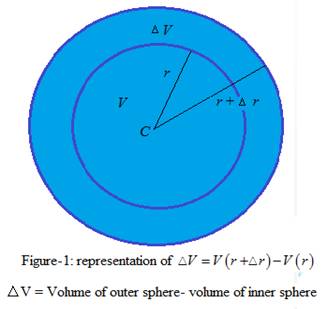
To find:The derivative of given function, to show change in the value of function with geometrical diagram, to give geometrical interpretation geometrically, and tell if unit makes sense.
Answer to Problem 30E
The derivative of volume with respect to radius is
Explanation of Solution
Given information:
The volume of a sphere as a function of radius r is given by
Method/Formulaused:
The derivative of the function
Calculations:
The volumeof sphere of radiusris given by
Differentiating equation (1) with respect to ‘ r’ , we have
The derivative of volume gives the change in volume of a sphere relative to the radius.
Let initially the radius of a sphere is r and changed to
Thus,
Now,
Since
Let we write
The change in volume of sphere with radiusis geometrically shown in Figure-1 here,

Interpretation of derivative geometrically:
It is given that the volume of sphere is a function of its radius. The graph of Vasthe function r is shown in Figure-2.
We consider two points
Let
Now the secant PQ becomes tangent,then taking limit as
Thus, the derivative of V with respect to radius r represents the slope of the tangent line at a point of the curve,

The unit of
Conclusion:
The derivative of volume with respect to radius is
Want to see more full solutions like this?
Chapter 2 Solutions
Modeling the Dynamics of Life: Calculus and Probability for Life Scientists
